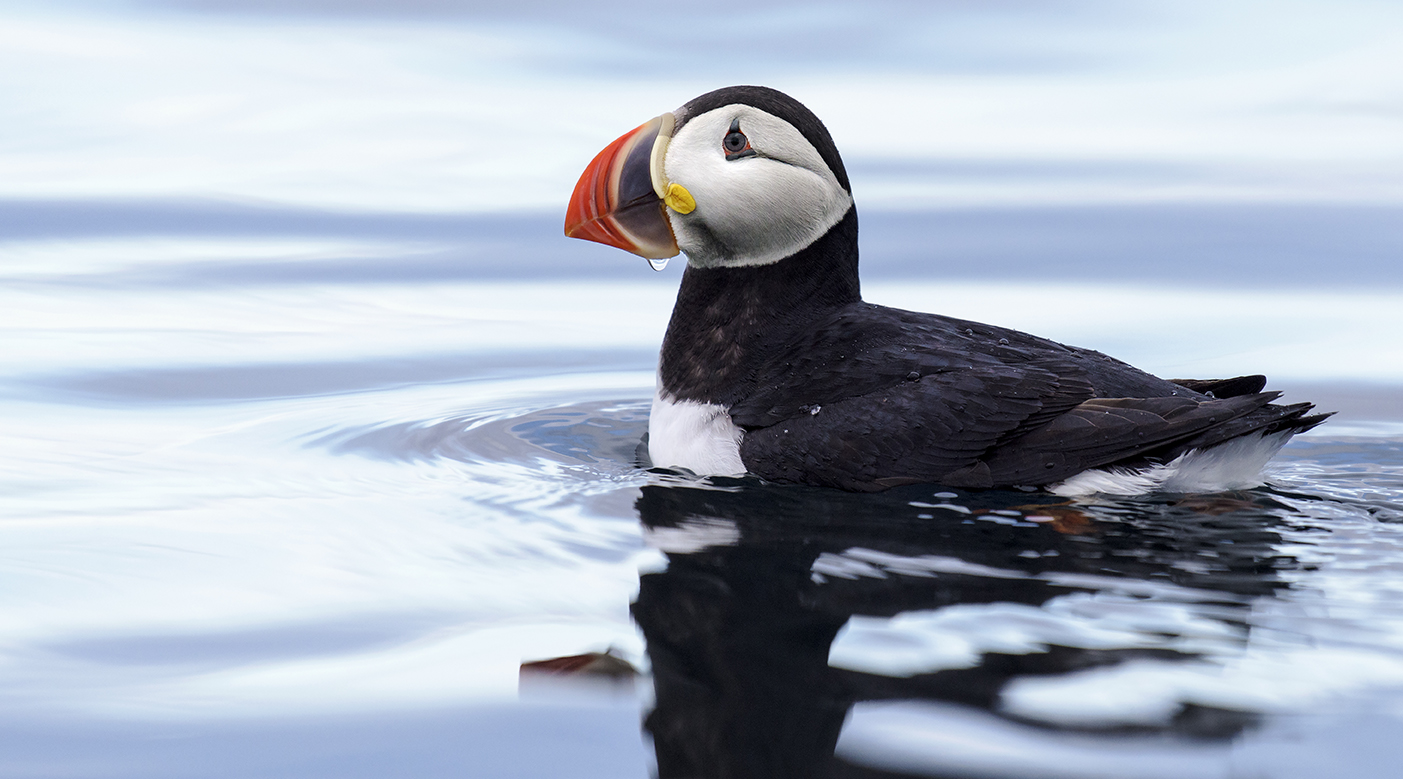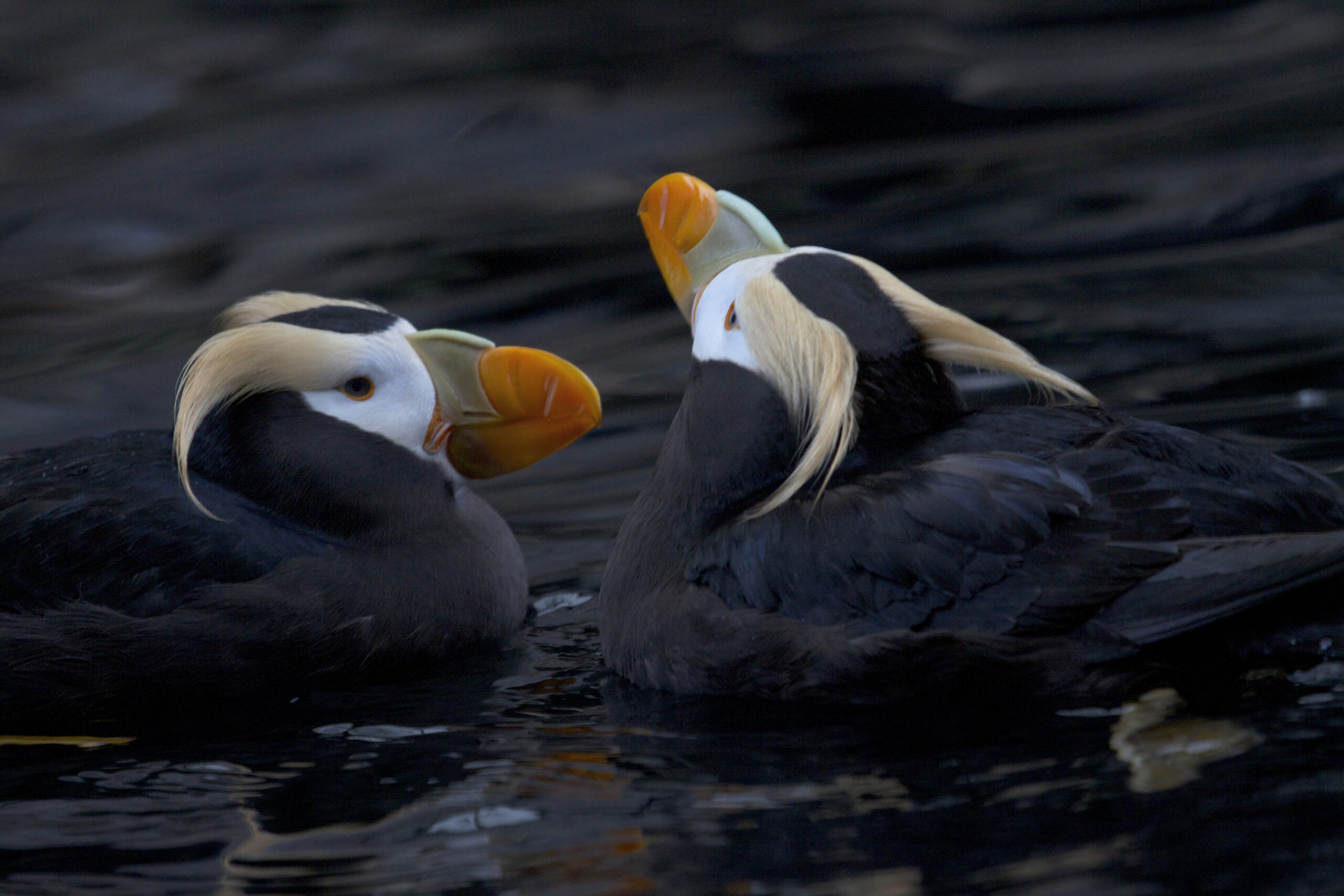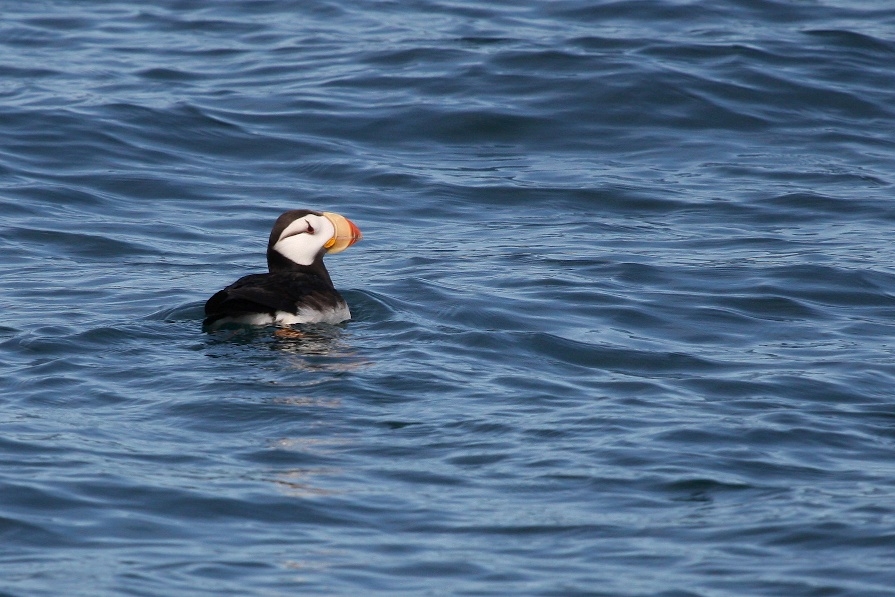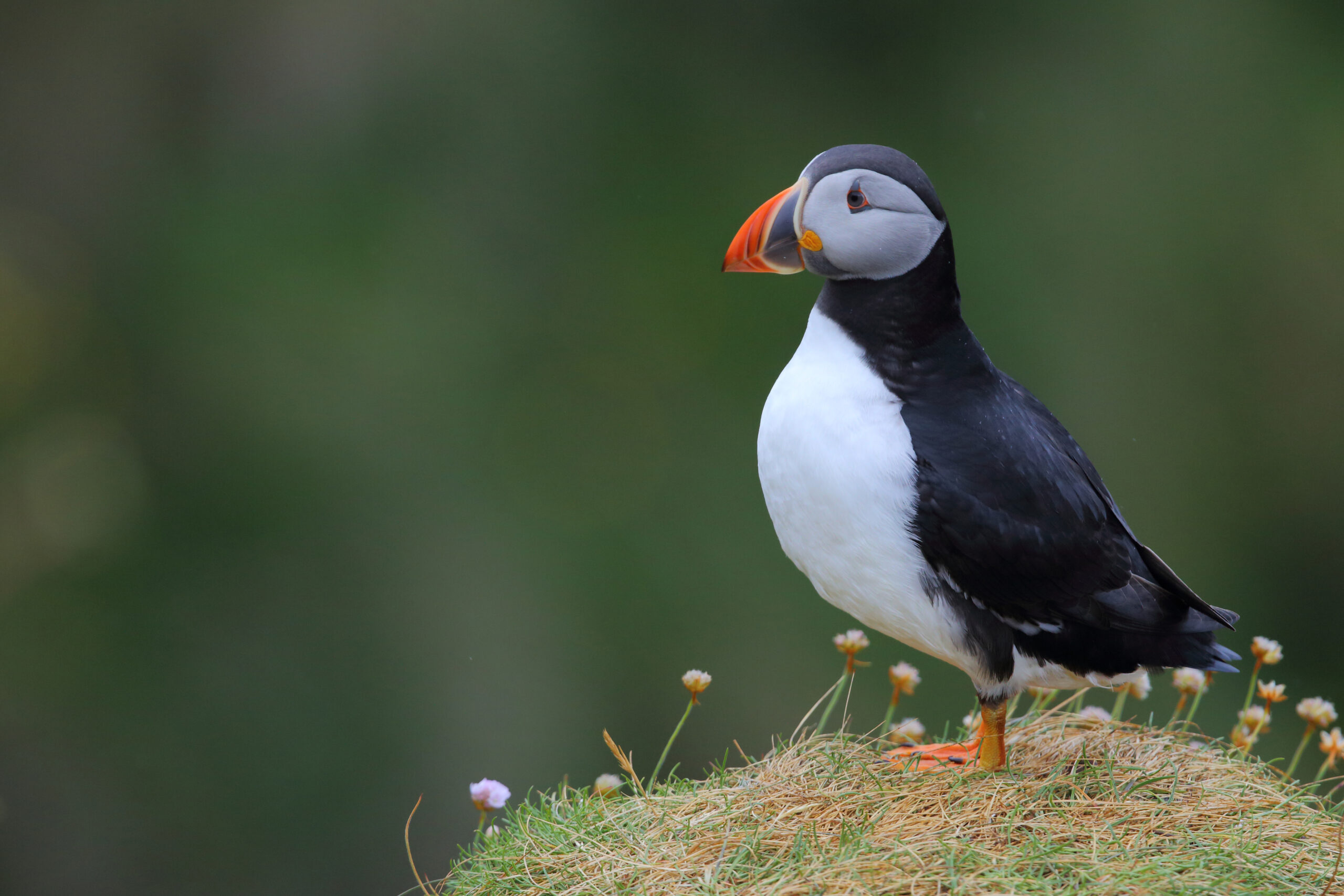5 Feathery Facts About Puffins
Learn about one of the most iconic seabirds in the North.

There is no greater thrill than sitting in my kayak, bobbing up and down with the waves and spotting some of Alaska’s amazing ocean wildlife. I am fortunate to have seen orcas, humpback whales, gray whales and sea otters while paddling around the coast. But one of my favorite animals to watch is the puffin. When puffins are on the lookout for fish, they quickly dive down, swim like a torpedo through the water and then resurface with a fish in their brightly colored beak. Brush up on your knowledge of these fascinating birds with five feathery facts:
-
Puffins are great flyers AND great swimmers.
Puffins can flap their wings up to 400 beats per minute, reaching speeds of 55 mph. They can dive 200 feet below the ocean surface, flapping their wings as if they are flying underwater. While diving, puffins use their large orange feet to steer so they can hunt for fish like sand eels, herring, hake and capelin. Puffins spend most of their time out in open water, but gather with other puffins near coasts when it’s time to breed. Did you know that puffin chicks are called pufflings?

-
There are three species of puffins.
Atlantic puffins live in the North Atlantic on the northern coasts of Europe and the coasts of New England and Atlantic Canada.
Horned puffins live in the North Pacific off the coasts of Alaska and British Columbia, wintering south to California and Baja California.
Tufted puffins live in the North Pacific off the coast of British Columbia, throughout southeastern Alaska and the Aleutian Islands. They winter south to California.
-
The puffin is one of the most emblematic seabirds of the North Pacific and Bering Sea region.
Horned and tufted puffins use the Bering Sea and North Pacific for feeding, nesting and breeding, which gives us the opportunity to see these iconic birds out on the water. With their distinctive bills and plumage, puffins are popular with birdwatchers, photographers and tourists.
-
Puffins are nicknamed the ‘clown of the sea.’
Puffins have very colorful, bright and flashy beaks—but only during the warmer summer months, when they are showing off for breeding season. The brighter and larger the beak, the better the bird will look to potential mates. After the perfect match is found, their beaks will fade to a duller color for the winter months.
-
Puffin populations are declining.
Even this amazing bird is not capable of out-flying the threats on our ocean. In 2016, tufted puffins in Alaska suffered a mysterious mass mortality event, one of several seabird die-offs in recent years that have caused deep concern among scientists. Despite this scare, puffins are still abundant along the Alaskan coastline. But in some areas of the world, overfishing has had a negative impact, making it difficult for puffins to get enough food for their young. And like other seabirds, puffins are extremely vulnerable to pollution such as oil spills.

You can help! All puffins rely on a thriving ocean to survive.
Accidents from risky offshore drilling operations could lead to a massive oil spill that could cause severe impacts to the economies of coastal communities, close commercial and recreational fisheries, mar beaches and shorelines, and injure or kill birds, fish and marine mammals.
Despite these risks, the Trump administration’s Interior Department is forging ahead with a plan to expand offshore drilling. We’re asking people to speak up against expanded offshore drilling. Will you join us?
Like other marine wildlife, puffins need the support of advocates like you to combat threats such as oil spills and support a healthy and resilient ocean. Please take action today.
